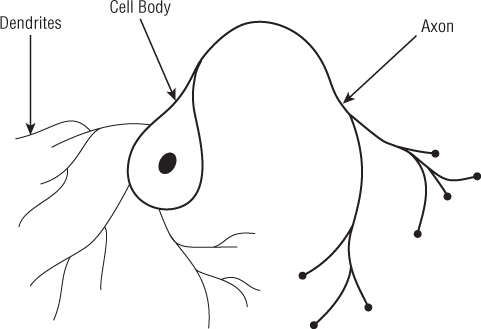Chapter 5Artificial Neural Networks
There's something about gathering knowledge about the human brain that makes people tick. Many people think that if we can mimic how the brain works, we'll be able to make better decisions.
In this chapter, you look at how artificial neural networks work and how they are applied in the machine learning arena.
What Is a Neural Network?
Artificial neural networks are essentially modeled on the parallel architecture of animal brains, not necessarily human ones. The network is based on a simple form of inputs and outputs.
…a computing system made up of a number of simple, highly interconnected processing elements, which process information by their dynamic state response to external inputs.
Dr. Robert Hecht-Nielson as quoted in “Neural Network Primer: Part I” by Maureen Caudill, AI Expert, Feb. 1989
In biology terms, a neuron is a cell that can transmit and process chemical or electrical signals. The neuron is connected with other neurons to create a network; picture the notion of graph theory with nodes and edges, and then you're picturing a neural network.
Within humans, there are a huge number of neurons interconnected with each other—tens of billions of interconnected structures. Every neuron has an input (called the dendrite), a cell body, and an output (called the axon), as shown in Figure 5-1.

Figure 5-1 The neuron structure
Outputs ...
Get Machine Learning: Hands-On for Developers and Technical Professionals now with the O’Reilly learning platform.
O’Reilly members experience books, live events, courses curated by job role, and more from O’Reilly and nearly 200 top publishers.

